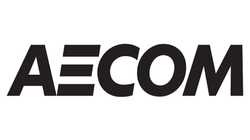Urgent call for SA to prioritise alternative waste-treatment technologies
| Urgent call for SA to prioritise alternative waste-treatment technologies_approved | 32 KB | Download | |
| Eight to ten million tons of waste a year is landfilled. | 3.75 MB | Download | |
| Environmental authorisations, permitting, licencing, and social issues hamper waste recovery in South Africa. | 3.51 MB | Download | |
| It can take up to ten years between identifying a suitable site and commissioning a landfill. | 1.7 MB | Download | |
| Separating waste at source is still not prevalent in South Africa. | 2.89 MB | Download | |
| Some municialities have established Material Recovery Facilities (MRFs). | 2.52 MB | Download | |
| Waste management is the least prioritised municipal service in most South African municipalities. | 2.08 MB | Download |
However, with Johannesburg, Tshwane, and Cape Town all having less than ten years of useful landfill life left, the pressure is on to find alternative waste-treatment technologies (AWTT), argues Nicola Liversage, AECOM’s Business Unit Director – Environment, Africa.
South Africa’s eight Category ‘A’ metropolitan municipalities have the highest population numbers, and therefore generate the largest waste volumes, at about 20 million and 10 million tons of waste a year respectively, of which the bulk is landfilled.
Landfilling at an average density of 1 t/m3 means that municipalities need an annual landfill space of about 10 million m3. While some municipalities like eThekwini boast a useful landfill life of 120 years, others such as Johannesburg, Cape Town and Tshwane have a limited useful landfill life of less than ten years.
“Therefore the need to investigate AWTT is crucial for diverting waste from landfill,” highlights Liversage. Johannesburg, the eThekwini Metropolitan Municipality, Cape Town, and the Sedibeng District Municipality have all completed AWTT feasibility studies, while the Drakenstein Local Municipality in the Western Cape has finalised a waste-to-energy feasibility study. AWTT feasibility studies are also under way in Tshwane and Ekurhuleni.
Material recovery facilities (MRFs) have been established in some municipalities in order to recover recyclables. However, these are hampered by the low rate of recovery of recyclables. The absence of separating waste at source means facilities are operated as ‘dirty’ MRFs with high contamination rates and lower recovery rates, compared to ‘clean’ facilities with low contamination rates.
In addition, some South African municipalities are piloting separation at source, but with a minimal response. In the European Union (EU), on the other hand, separation at source has been key in enabling the diversion of waste from landfill by means of recycling, composting, and incineration. In South Africa, waste incineration is still small-scale, used mainly for the thermal treatment of healthcare and some hazardous waste.
With regard to the challenges facing waste management in South Africa, Liversage points to environmental authorisations, permitting, licencing and social issues as the main stumbling blocks. “In fact, it can take up to ten years between identifying a suitable site and actually commissioning a landfill,” she adds.
Although the capex and maintenance costs of technologies for treating waste are substantial, landfilling remains less expensive than AWTT. However, the cost of landfilling may be even higher at the end of the day, given the cost of managing a landfill upon its closure. The life of a landfill may stretch to about 50 years after it closes. In addition, the absence of carbon taxes means that landfilling continues to dominate waste management in South Africa compared to AWTT, which is increasingly the norm in the EU.
Ends
Notes to the editor
To download hi-res images for this release, please visit http://media.ngage.co.za and click on the AECOM link to view the company’s press office.
About AECOM
AECOM is built to deliver a better world. We design, build, finance and operate infrastructure assets for governments, businesses and organisations in more than 150 countries. As a fully integrated firm, we connect knowledge and experience across our global network of experts to help clients solve their most complex challenges. From high-performance buildings and infrastructure, to resilient communities and environments, to stable and secure nations, our work is transformative, differentiated and vital. A Fortune 500 firm, AECOM had revenue of approximately $18 billion during fiscal year 2015. See how we deliver what others can only imagine at aecom.com and @AECOM.
Media Contact
Mmule Ncongwane
NGAGE Public Relations
Phone: (011) 867-7763
Fax: 086 512 3352
Cell: 083 661 8751
Email: mmule [at] ngage [dot] co [dot] za
Web: www.ngage.co.za
Browse the NGAGE Media Zone for more client press releases and photographs at http://media.ngage.co.za

